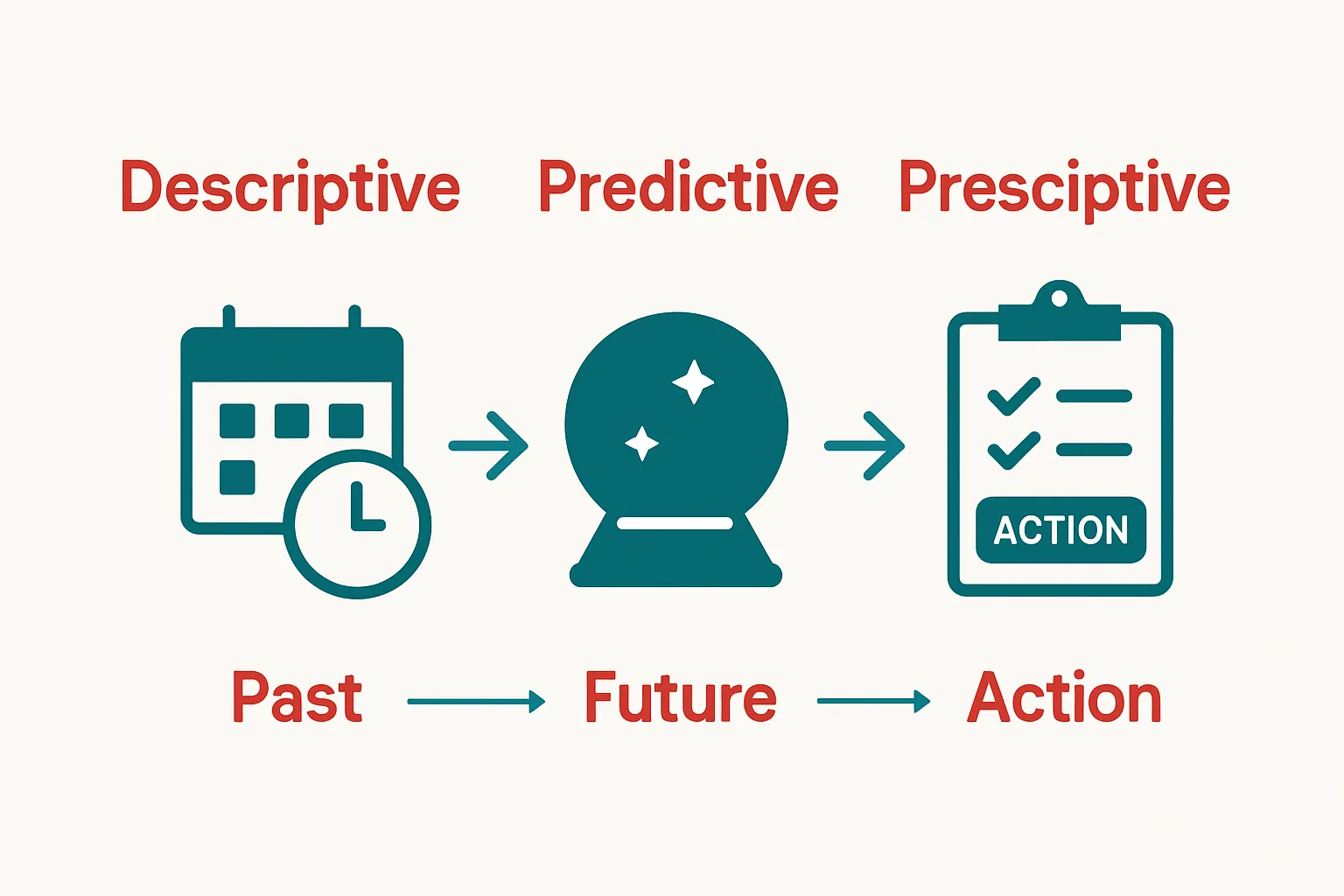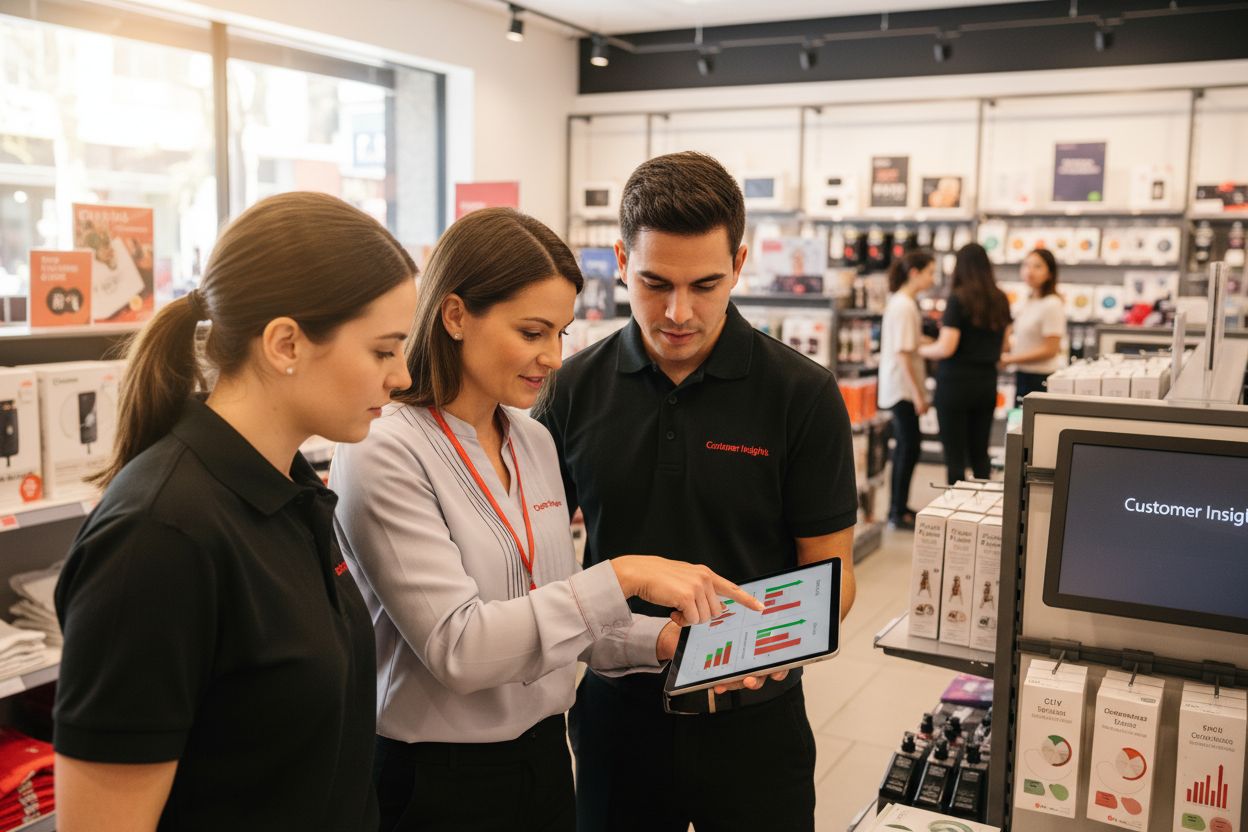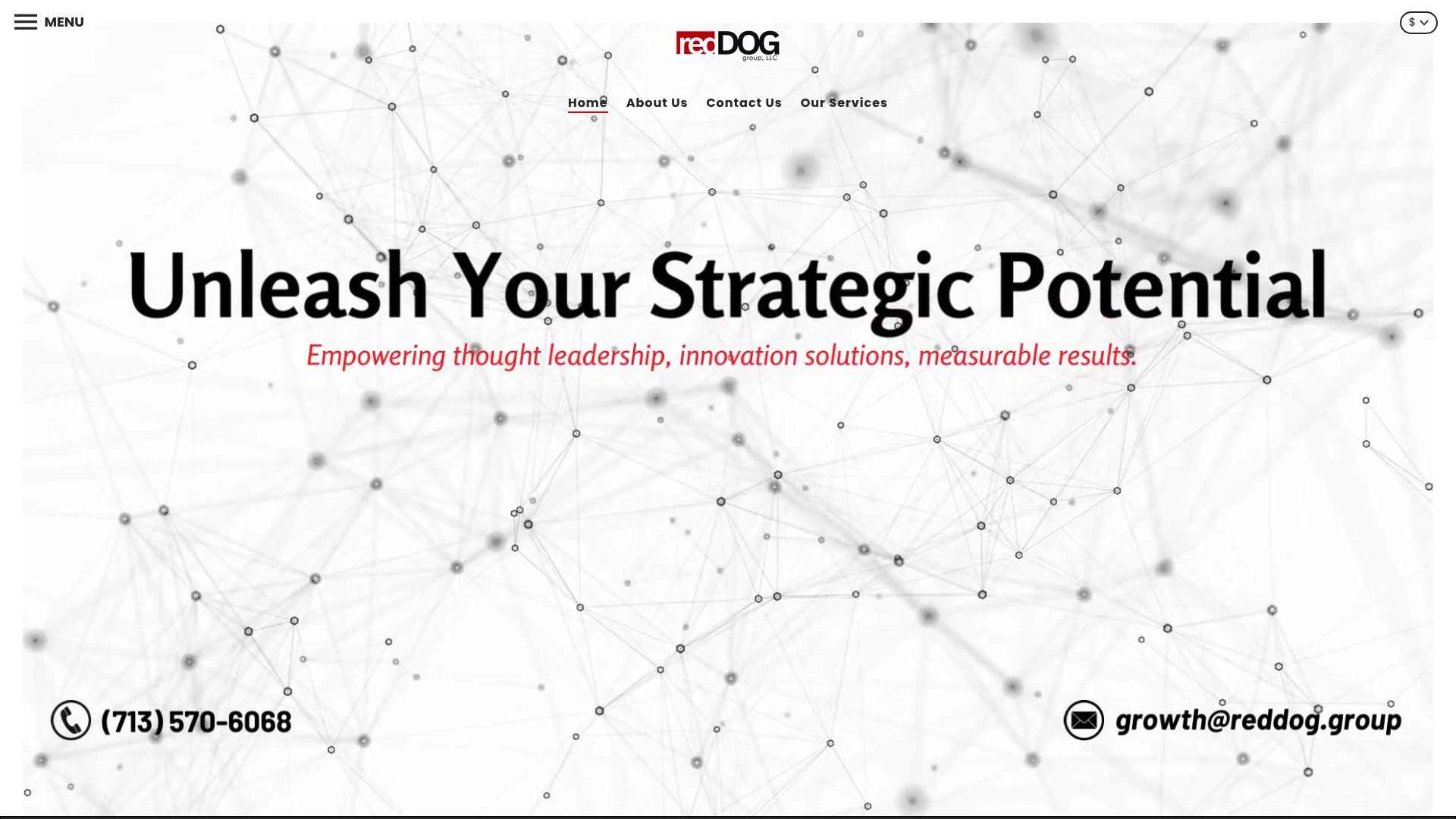
Understanding Why Use Retail Analytics for Growth
Posted on
Retail analytics is transforming the way businesses make decisions. Companies that use advanced analytics can potentially increase their operating margins by 60 percent or more according to McKinsey. Most people think retail analytics is just about tracking sales, but it actually unlocks deep insights into customer behavior and market trends that keep businesses ahead of the curve.
Table of Contents
- What Is Retail Analytics And Its Importance?
- Why Does Retail Analytics Matter For Businesses?
- How Retail Analytics Works: Key Processes Explained
- Key Concepts In Retail Analytics: Metrics And Tools
- Real-World Applications Of Retail Analytics In Retail
Quick Summary
| Takeaway | Explanation |
|---|---|
| Retail analytics drives data-informed decisions | Using analytics allows businesses to turn raw data into strategic insights for growth and efficiency. |
| Key metrics improve operational efficiency | Metrics like Customer Lifetime Value and Inventory Turnover help retailers optimize performance and decision-making. |
| Personalized marketing enhances customer engagement | Through data analysis, retailers can create targeted marketing campaigns that resonate with individual consumer preferences. |
| Predictive analytics anticipates market trends | Retailers can forecast customer needs and market changes, enabling proactive strategies to address future demand. |
| Advanced tools streamline data processing | Leveraging AI and machine learning simplifies data analysis, helping businesses harness actionable insights quickly. |
What is Retail Analytics and its Importance?
Retail analytics represents a powerful data-driven approach that enables businesses to transform raw transactional information into strategic insights. By leveraging advanced technological tools and sophisticated algorithms, retailers can decode complex consumer behaviors, optimize operational performance, and make informed decisions that drive substantial growth.
Understanding the Core Concept
At its fundamental level, retail analytics involves collecting, processing, and interpreting data generated across various retail channels. Our guide on understanding omnichannel analytics provides deeper context into how different sales platforms contribute to comprehensive data analysis. This systematic approach allows businesses to examine critical metrics like customer purchasing patterns, inventory movements, sales performance, and consumer preferences.
The primary objective of retail analytics is not merely to collect data, but to extract meaningful patterns that can inform strategic business decisions. According to McKinsey & Company, companies utilizing advanced analytics can potentially increase their operating margins by 60% or more.
Strategic Implications for Businesses
Retail analytics offers multifaceted benefits that extend far beyond simple number crunching. By understanding why use retail analytics, businesses can unlock significant competitive advantages:
- Precision in demand forecasting
- Enhanced customer segmentation
- Optimized pricing strategies
- Improved inventory management
- Personalized marketing campaigns
These insights enable retailers to anticipate market trends, reduce operational inefficiencies, and create more targeted consumer experiences. The ability to predict and respond to emerging customer needs becomes a critical differentiator in today’s rapidly evolving retail landscape.
By transforming complex datasets into actionable intelligence, retail analytics empowers businesses to make proactive, data-driven decisions that directly impact bottom-line performance and sustainable growth.
Why Does Retail Analytics Matter for Businesses?
Retail analytics transforms from a technical tool into a strategic imperative for businesses seeking sustainable growth and competitive advantage. Beyond simple data collection, it represents a critical mechanism for understanding complex market dynamics and making precision-driven decisions.
Driving Strategic Business Intelligence
In an increasingly competitive marketplace, retail analytics provides businesses with unprecedented insights into consumer behavior and operational efficiency. Our guide on retail strategy best practices emphasizes how data-driven approaches can revolutionize business performance. Businesses utilizing advanced analytics gain the ability to:
- Predict emerging market trends
- Understand customer preferences with granular accuracy
- Minimize operational waste
- Optimize resource allocation
- Create personalized customer experiences
According to Deloitte, companies leveraging comprehensive retail analytics can potentially increase their profitability by 20-30% through more informed decision making.
Economic and Competitive Advantages
Retail analytics offers a multifaceted approach to business intelligence that goes beyond traditional reporting. Predictive capabilities allow organizations to anticipate market shifts, customer needs, and potential challenges before they become critical. This proactive strategy enables businesses to develop adaptive models that respond dynamically to changing consumer landscapes.
By transforming raw data into actionable strategies, retail analytics becomes more than a technological tool it becomes a fundamental driver of business growth, innovation, and long-term sustainability. The capacity to translate complex datasets into clear, strategic insights represents a significant competitive differentiator in today’s rapidly evolving retail environment.
How Retail Analytics Works: Key Processes Explained
Retail analytics operates through a sophisticated ecosystem of data collection, processing, and strategic interpretation. By integrating multiple technological frameworks, businesses can transform raw information into meaningful business intelligence that drives informed decision making.
Data Collection and Integration
Advanced retail analytics begins with comprehensive data aggregation from diverse sources. Our detailed guide on retail strategy provides additional context on strategic data management. These sources typically include:
- Point-of-sale (POS) systems
- Online transaction platforms
- Customer relationship management (CRM) databases
- Social media interactions
- Inventory management systems
According to research from IBM, successful data integration requires robust technological infrastructure that can seamlessly consolidate information across multiple channels and platforms.
Advanced Analytical Processes
The core of retail analytics lies in transforming collected data into actionable insights through three primary analytical approaches:

- Descriptive Analytics: Understanding what happened historically
- Predictive Analytics: Forecasting potential future trends
- Prescriptive Analytics: Recommending specific strategic actions
Machine learning algorithms play a crucial role in analyzing complex datasets, identifying nuanced patterns, and generating sophisticated predictive models that enable businesses to anticipate market shifts and consumer behaviors with unprecedented accuracy.
Below is a comparison table summarizing the three main types of analytics processes used in retail analytics as described in the article.
| Analytical Approach | Main Focus | Purpose |
|---|---|---|
| Descriptive Analytics | Past data and events | Understand what happened historically |
| Predictive Analytics | Future trends and outcomes | Forecast potential future trends |
| Prescriptive Analytics | Recommending actions | Suggest specific strategic actions based on predictive data |
By leveraging these advanced analytical processes, businesses can develop a dynamic understanding of their operational landscape, enabling more precise strategic planning and responsive decision making in an increasingly complex retail environment.
Key Concepts in Retail Analytics: Metrics and Tools
Retail analytics encompasses a complex ecosystem of specialized metrics and advanced technological tools designed to extract actionable insights from vast amounts of business data. Understanding these key components is crucial for businesses seeking to leverage data-driven strategies effectively.
Essential Retail Analytics Metrics
Our guide on digital marketing in retail highlights the interconnection between analytics and strategic decision making. The most critical metrics businesses should track include:
- Customer Lifetime Value (CLV): Total revenue generated by a customer throughout their relationship with the business
- Conversion Rate: Percentage of potential customers who complete a desired action
- Average Transaction Value: Mean monetary value of individual customer purchases
- Inventory Turnover Rate: Speed at which inventory is sold and replaced
- Gross Margin Return on Investment (GMROI): Measurement of profit generated from inventory investment
According to Harvard Business Review, companies that effectively track and interpret these metrics can improve operational efficiency by up to 40%.
The table below outlines essential retail analytics metrics introduced in the article, along with a brief definition and their business value.
| Metric | Definition | Business Value |
|---|---|---|
| Customer Lifetime Value (CLV) | Total revenue generated by a customer throughout their relationship | Evaluates long-term customer worth |
| Conversion Rate | Percentage of potential customers who complete a desired action | Measures marketing and sales effectiveness |
| Average Transaction Value | Mean monetary value of individual customer purchases | Provides insight into customer spending patterns |
| Inventory Turnover Rate | Speed at which inventory is sold and replaced | Assesses inventory management efficiency |
| Gross Margin Return on Investment | Profit generated from inventory investment | Indicates profitability from inventory strategies |

Advanced Analytical Tools and Technologies
Modern retail analytics relies on sophisticated technological infrastructure that goes beyond traditional reporting mechanisms. Artificial intelligence and machine learning algorithms enable businesses to process complex datasets, identifying intricate patterns and generating predictive models with remarkable precision.
The most powerful tools in contemporary retail analytics include cloud-based platforms, real-time dashboards, and integrated business intelligence systems that provide comprehensive, instantaneous insights into organizational performance. These technologies transform raw data into strategic intelligence, empowering businesses to make informed, proactive decisions in an increasingly competitive marketplace.
Real-World Applications of Retail Analytics in Retail
Retail analytics transforms theoretical insights into tangible business strategies across multiple operational dimensions. By translating complex data into actionable intelligence, businesses can revolutionize their approach to customer engagement, inventory management, and strategic planning.
Customer Experience Enhancement
Our insights on retail expansion strategies underscore the critical role of data-driven customer understanding. Retail analytics enables businesses to create personalized customer experiences through:
- Targeted marketing campaigns based on individual purchasing history
- Customized product recommendations
- Precise customer segmentation
- Dynamic pricing strategies
- Tailored loyalty program designs
According to Gartner Research, companies leveraging advanced analytics can increase customer satisfaction rates by up to 25% through hyper-personalized interactions.
Inventory and Supply Chain Optimization
Advanced predictive modeling allows businesses to transform inventory management from a reactive to a proactive discipline. By analyzing historical sales data, seasonal trends, and external market factors, retailers can:
- Minimize stockout scenarios
- Reduce excess inventory carrying costs
- Optimize warehouse space utilization
- Streamline procurement processes
- Improve overall supply chain efficiency
Retail analytics provides a sophisticated mechanism for businesses to anticipate demand fluctuations, ensuring they maintain optimal inventory levels while minimizing financial risks associated with overstocking or understocking critical product lines.
Unlock Growth with Data-Driven Retail Decisions
Are you struggling to turn complex retail data into clear strategies that actually boost your sales? When you read about retail analytics, the challenge is clear. Small and medium-sized businesses often face uncertainty when it comes to predicting market trends, optimizing inventory, and creating real customer impact. Stress, wasted resources, and missed growth opportunities are real pain points. Now is the moment to transform your raw data into your most powerful business asset with hands-on support from Reddog Group’s Digital & Business Consulting Services.

Why settle for guesswork when you can work with a proven partner who manages over 30,000 SKUs and has helped more than 50 brands achieve reliable YoY revenue growth? Act now to see how our omnichannel and ecommerce expertise leads to measurable retail success. Visit Reddog Group to connect with experts who specialize in unlocking growth across every selling channel. Take the first step towards smarter, actionable insights and explore our Digital & Business Consulting Services today.
Frequently Asked Questions
What is retail analytics?
Retail analytics is a data-driven approach that allows businesses to collect, process, and interpret data from various retail channels to gain insights into consumer behavior, optimize operational performance, and make informed decisions.
Why is retail analytics important for growth?
Retail analytics is vital for growth as it helps businesses predict market trends, understand customer preferences, minimize operational waste, and create personalized experiences, ultimately driving profitability and sustained success.
How does retail analytics improve customer experience?
By analyzing customer data, retail analytics enables businesses to tailor marketing campaigns, personalize product recommendations, and enhance customer interactions, leading to increased satisfaction and loyalty.
What are the key metrics in retail analytics?
Essential metrics include Customer Lifetime Value (CLV), Conversion Rate, Average Transaction Value, Inventory Turnover Rate, and Gross Margin Return on Investment (GMROI), all of which provide insights into performance and help inform strategic decisions.
Leave a comment: